Picture this: your garden is blooming with flowers, tomatoes, potatoes, beans, and other herbs and vegetables.
Then, suddenly, you notice considerable damage one day, and some of the herbs are missing.
The first traces show deer visited your property. What will you do?
You can install an electric fence to prevent deer from intruding and destroying your enclosure area.
But how to do so?
Follow the essential tips about the electric fence for deer below.
Deer: friendly or not?
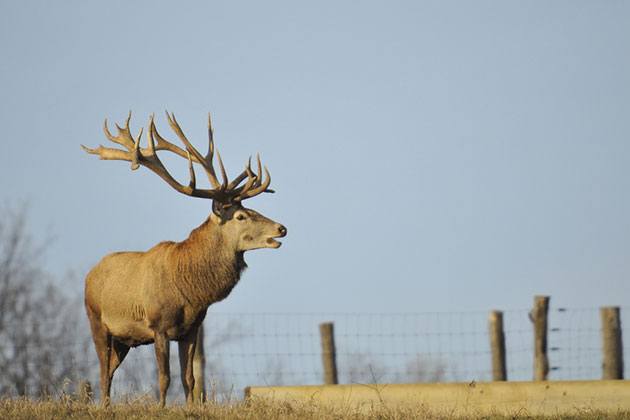
Deer and elk are no-domestic animals, challenging to deal with.
According to some biologists, the deer population in North America is the highest. Many claims that white-tailed deer exceed 20 million nationwide.
Even though they’re not beasts like coyotes or wolves, these animals still belong to wildlife. So, they’re not conditioned to human contact.
Deer and elk are prone to ranging wider areas to forage. They’re mainly motivated by the food source.
Due to their abilities, deer and elk can jump more than most regular animals.
Their behavior might also be unexpected, spooky, or excitable, so they may not notice a fence line when running out of fear.
Unfamiliar sounds, including traffic, dogs barking, and similar loud noises, can scare elk and deer away.
Therefore, elk and deer fencing are the best solutions for a proper physical and psychological barriers.
How to construct excellent electric fencing?
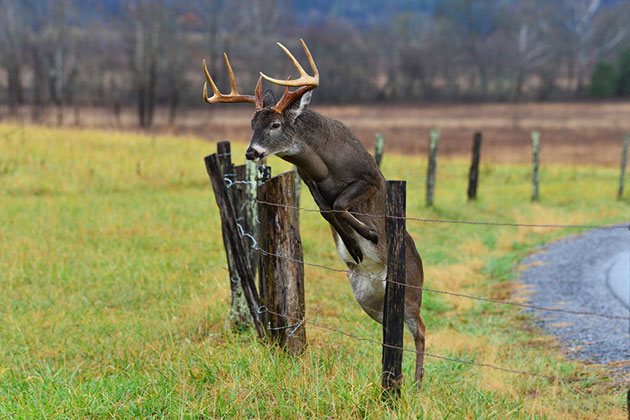
The most popular material for deer fencing is a woven wire deer fence. However, it can be an electrified fence with specific modifications.
Woven wire is an ideal electric fence for elk and deer, made of premium-quality 12.5 gauge high-tensile fence wire with one-vertical wires cut at each intersection point.
Such a fence uses a so-called fix-knot design.
The fence design provides rigidity and holds the wires in place securely.
Besides, the woven wire fence also features a graduated spacing, providing advanced security along the bottom of the fence.
So, what’s the best fence model?
The minimum height for the woven wire electric fencing is fifteen feet of height.
In addition, you should post ground rods three to four feet into the ground, with the corner posts even deeper into the ground.
But, you must use only high-quality materials.
High-tensile electric fencing is another excellent choice for deer and elk, as the construction is durable and solid enough to resist deer. Plus, it’s tall to prevent predators from coming it.
These electric fences are also ideal for low cost, low maintenance, and easy-to-install design.
The fences will last up to 40 years and are the best choice for deer and elk control. They’re also ideal permanent fences.
Thanks to the spring and wire system, the permanent fences are flexible and return to their original position if an elk or deer herd suddenly attacks.
Nowadays, you can find various low-cost fences to prevent deer from ruining your food plots, gardens, newly planted trees, vineyards, etc.
Whatever your choice might be, pay attention to the wire spacing. It should be close enough to prevent the animal from putting its head through the wires or the deer fence.
You will need a proper deer fence between seven and nine wire strands to the fence posts standing at least seventy inches above the ground.
Ensure the wires are close to the nose of the animals.
But, experts recommend an electrified wire – the top wire above the elk or deer’s head to prevent their jump.
Still, you might have to install a ground wire return mechanism in rocky, frozen, or dry ground.
What’s the optimal power?
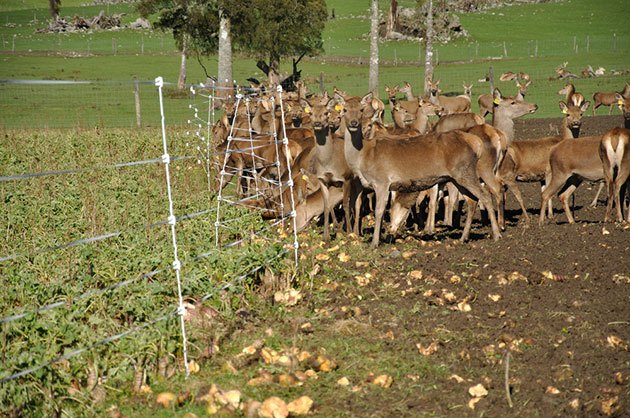
Elk and deer fencing requires a specific fence charger to maintain between 4,000 and 5,000 volts of power.
The high voltage levels might be impacted by the vegetation on the fence line, wire diameter, or size.
However, as your fence must be working correctly, specific materials and fencing height requirements will need to be met for a correct construction.
Therefore, consulting a fencing contractor is also strongly recommended.
How to exclude deer and elk?
As we have mentioned, deer can be a pain for homeowners with gardens and landscaping. Although challenging, it’s still possible to repel deer out of your land.
Since deer often run from one place to another, they will move through the deer fence without seeing it.
So, to exclude deer from the area or their trail, the first step is to construct an evident and sturdy deer fence.
In most cases, the best deer fence will be a high-tensile electric model, six feet tall.
You can use molasses or peanut butter on a pie tin to bait the electric fences and attract deer to slow down and avoid ruining your fences.
Once they touch the deer fence with their tongue or nose, they will receive an intense but safe shock.
A shock will cause deer to back up and leave the area. So, after a couple of shock sessions of deer fences, deer will walk away, looking for other food sources.
Temporary fences are another ideal solution if the permanent fences don’t work well.
You will need T-posts with seven strands of poly tape or poly wire spaced ten inches apart.
Again, you need a low-impedance fence charger to ensure the deer fence is working correctly. Similarly, you can choose the Gallagher model or check various models here.
The charger must maintain 4,000 to 5,000 volts for optimal performance.
However, remember that sometimes even electric fencing cannot help you deter deer and elk effectively.
Some persistent animals will find a way to break into the restricted area and destroy your new fence, especially during the growing season.
And once deer learn that they can jump over the fence without pain, you cannot prevent your garden from deer damage if that’s their only food source.
In most cases, the animal’s drive for food is stronger than the barrier, so deer fences might not be that productive. Still, they’re better than nothing, you’ll agree.
So, electric fences: Yes, or no?
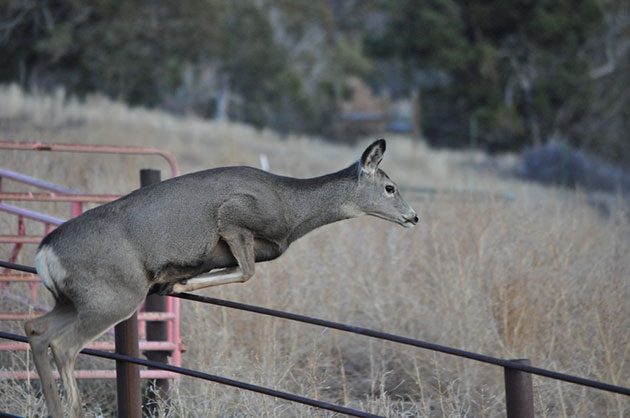
Experts say YES. Yet, they must be appropriately used and installed.
It would be best to use a three-strand fence.
The three-dimensional element will affect deer perception. Thus, they will be reluctant to jump over.
But you need adequate equipment, including:
1. Energizers
Depending on whether you have access to the electrical outlet, you can choose between solar-powered, battery-powered, or plug-in models.
Each output joule runs three miles of the electric fence line.
The charger must have a wildlife pulse system to pulse faster at night when the wildlife is more active.
2. Grounding system
Poor grounding won’t be practical for a deer fence. Only a good ground ensures delivering electricity and shocks to intruders.
You’ll need three-foot ground rods installed to be moist or easy to water during the whole year. The space between the rods must be at least ten feet apart.
3. Voltmeter
The fence must run 5,000 or 6,000 volts to deter deer so that you can test the voltage with the voltmeter.
The meter and energizer from the same producer ensure the best results.
4. Wire system
Turbo-braid or turbo-wire are the best electric wire types for durability and sturdiness. They’re also visible, so wildlife and humans can avoid restricted areas.
The more wires, the better the fence defense will be. But, you’ll need between seven and nine wires.
5. Posts
The best solutions are T-posts for corners and fiberglass step-in posts for in-line.
As fiberglass and plastic don’t carry electric charges, you don’t need to add insulators. Thus, you can exclude short circuits and save money.
But if you use metal T-posts, you need insulators to omit short circuits.
Read more —
Best Electric Fence For Squirrels 2022: Useful Tips & Tricks For Less Nuisance
What about other pests?
When deterring rabbits, woodchucks, raccoons, and other intruders from your garden, you can add insulators and place the bottom wire six inches above the soil.
This will also prevent foxes and the rest of the predators from digging and entering your farm, garden, or another confined site where your livestock dwell.
You can also use fox netting for these pests. The netting will be tall enough to keep them away and effectively scare them off.
So, if the fence isn’t working properly, try with netting. It will resist snow, ice, rain, and wind.
FAQs
How many joules do I need to keep deer out?
You need an energizer putting out at least one joule of energy.
What size electric fence charger do I need for deer?
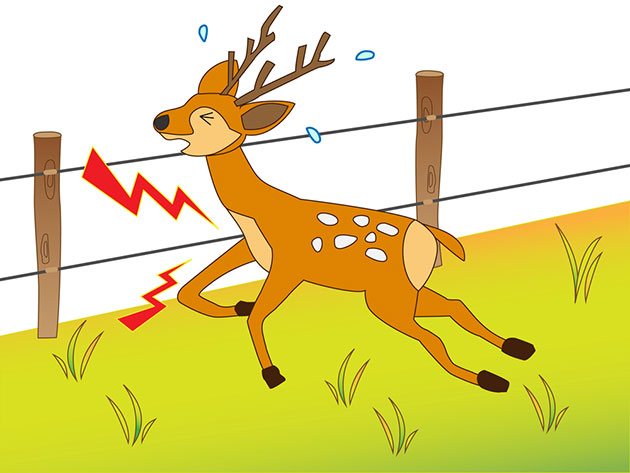
You need a low-impedance electric fence charger, delivering between 4,000 and 5,000 volts. You can find them at the Amazon site or here.
Will deer jump a fence they can’t see through?
According to the University of Vermont experts, sturdy wooden fences or ones with similar overlapping slats they cannot see through will not be attractive to deer.
So, they’ll stay away from such constructions.
Will an invisible fence keep deer away?
Not really. They are better for domestic animals – horses, cows, etc., but deer can easily ruin them.
Also, they cannot perform once broken, so the animals will freely feed on your property.
Besides, they’re a breed that requires more shocks to leave the confined area.
Conclusion
So, will you attempt to stop deer and elk from visiting too often?
If you will, please follow the configurations:
- seven to nine wire strands
- posts that stand at least 70 inches above the soil
- fence charger with 4,000 to 5,000 volts.
For additional questions, please leave a comment below. And let me know once you set up the electric fence for deer correctly. Good luck!

Hi Ben
I am looking at protecting around 50 4 foot mountain pine trees all in a row between my property and the neighbors.
By law only allowed side yard 6 foot fence and front yard 4 foot fence.
If I put an electric fence 3 strings on both side of the trees 6 feet ht about 6 feet in width do you think this would deter deer on feeding on them?
Thanks